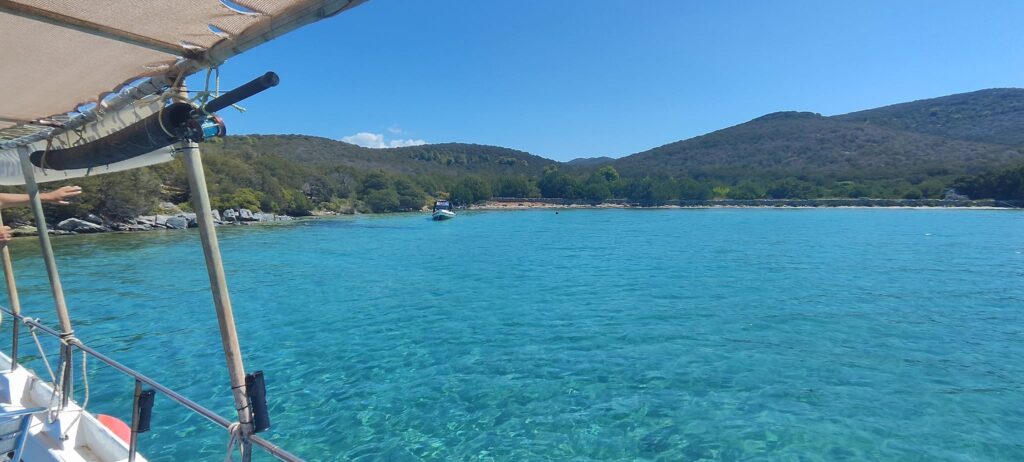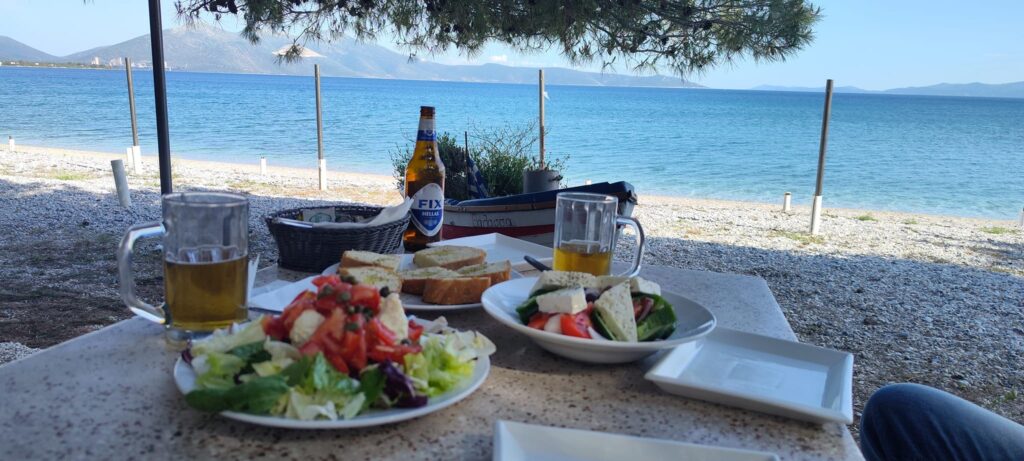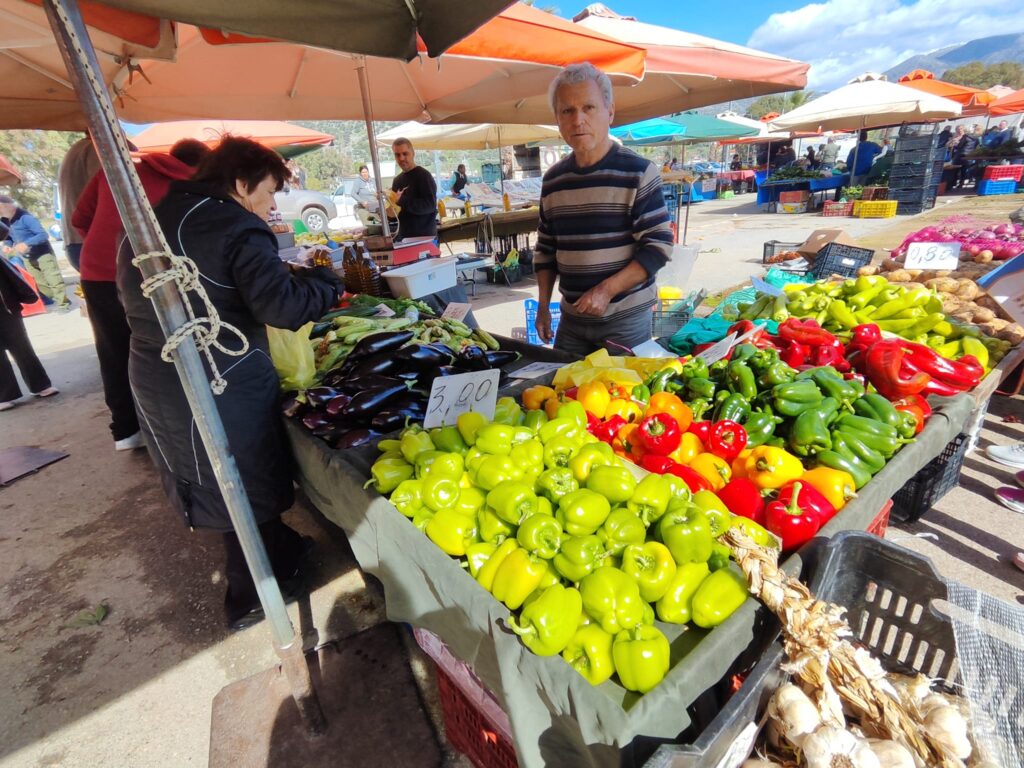Imagine an island where pristine beaches meet lush forests, where ancient ruins whisper tales of bygone eras, and where charming fishing villages seem frozen in time. Welcome to Evia, Greece’s second-largest island, yet one of its best-kept secrets. Just a stone’s throw from Athens, Evia offers a perfect blend of natural wonders, historical treasures, and authentic Greek experiences that will captivate even the most seasoned traveler.
A Tapestry of Time: Evia’s Fascinating History
A Tapestry of Time: Evia’s Fascinating History Evia, known as Euboea in ancient times, has a rich history dating back to the Neolithic period. The island played a significant role in Greek mythology, with legends claiming it was created when Poseidon struck the mainland with his trident. Throughout history, Evia has been a strategic location, coveted by various powers, including the Athenians, Macedonians, Romans, Venetians, and Ottomans.
An intriguing anecdote involves the great philosopher Aristotle. Legend has it that he died at Cape Kafireas (also known as Cavo D’Oro) on Evia. Frustrated by his inability to explain the strong currents in the strait, he allegedly threw himself into the sea, exclaiming, “If Aristotle cannot comprehend Euripus, then Euripus must comprehend Aristotle!”
During the Greek War of Independence (1821–1829), Evia was a hotbed of revolutionary activity. The island’s rugged terrain provided ideal hiding spots for Greek freedom fighters, and many battles were fought here against Ottoman forces.
Sun, Sand, and Serenity: Evia’s Spectacular Beaches

Evia’s coastline is a beach lover’s paradise, with each stretch of sand offering its own unique charm.
Take Chiliadou Beach, for instance. Nestled on the western coast of southern Evia, it’s a hidden gem that rewards those willing to brave the winding road through pine forests. As you emerge from the trees, you’re greeted by a stunning 1.5-kilometre pebble beach flanked by towering cliffs. The crystal-clear waters here are a sight to behold, especially in the calm morning hours. Just remember to pack a picnic; facilities are scarce, which only adds to Chiliadou’s unspoiled beauty.
For families, Nea Stira is a godsend. This Blue Flag beach on the southwest coast stretches for a glorious 2 km, its golden sands sloping gently into shallow waters that are perfect for little ones to splash about in. Unlike Chiliadou, Nea Stira is well-equipped with sunbeds, umbrellas, and water sports facilities. After a day of sun and sea, you can stroll to one of the beachfront tavernas for a plate of freshly caught fish.
If you’re after something a bit more dramatic, head to Kalamos Beach in northern Evia. It’s a place that seems designed by nature for Instagram, with unique rock formations jutting out of deep blue waters. Snorkelling enthusiasts will be in heaven here; the waters are teeming with marine life. As the day winds down, find a spot on the small pebble beach and watch the sun sink into the sea. Trust me, it’s a sunset you won’t forget in a hurry.

Hiking Evia’s Natural Wonders
The Dimosaris Gorge: This 10-kilometre trail follows an ancient path through a lush gorge, passing waterfalls, stone bridges, and old watermills. It’s a journey through both nature and history.
Mount Dirfys, the highest peak on Evia, offers challenging hikes and rewarding views. In spring, the slopes are covered with wildflowers and rare alpine plants.
The Petrified Forest of Kerasia is a unique geological site where visitors can see fossilised tree trunks dating back 20 million years. The trail here offers insights into the island’s prehistoric past.
Evia’s Coastal Gems
Evia’s harbours are like characters in a story, each with its own personality and tales to tell. Take Karystos, a lively southern port town that’s home to about 5,000 souls. Strolling along its waterfront promenade, you’ll be torn between gazing at the bobbing fishing boats and the enticing cafes and tavernas lining the street. Don’t miss the 13th-century Venetian fortress, Bourtzi, standing guard at the harbour entrance like a weathered old soldier. If you’re lucky enough to be there on a Thursday, dive into the weekly market; it’s a feast for the senses.
In contrast, Limni on the northwest coast feels like stepping back in time. With just 2,000 residents, it’s the kind of place where life moves at a leisurely pace. Wander through its narrow streets, admiring the well-preserved neoclassical buildings, and you’ll feel the weight of modern life slipping away. The small pebble beach in the town centre is perfect for a quick dip, followed by a coffee at a harborside cafe. As the fishing boats come in with the day’s catch, you’ll understand why the local economy still revolves around the sea.
Then there’s Marmari, a quiet port town in southern Evia that serves as a gateway to some of the island’s most secluded beaches. It’s the kind of place where you can while away an afternoon watching the ferries come and go or chatting with locals in a fish taverna. If you’re feeling adventurous, hop on a boat trip to the nearby islets. As the sun sets and the lights of the harbour twinkle, you’ll feel like you’ve discovered a secret corner of Greece.
Cultural Treasures: Evia’s Must-Visit Sites
Evia’s cultural sites are like windows into the island’s rich past. The Dragon Houses near Styra and Karystos are a mystery wrapped in stone. These megalithic structures, dating back to the 7th and 6th centuries BCE, seem to defy logic with their massive stone blocks fitted together without mortar. As you stand in the shadow of these ancient buildings, you can’t help but wonder about their purpose. Were they temples? Shelters for quarry workers? The theories are as varied as the landscape around them. The most famous, perched high on Mount Ochi, requires a challenging hike to reach, but the views and the sense of ancient mystery make every step worthwhile.
In Eretria, history comes alive in a different way. This archaeological site on the west coast is a treasure trove of ancient Greek civilization. As you walk through the ruins, you can almost hear the echoes of audiences cheering in the well-preserved theatre or imagine the rituals once performed in the Temple of Apollo Daphnephoros. The House of the Mosaics is a particular highlight; its intricate floor designs are a testament to the artistic skills of ancient craftsmen. The on-site museum brings it all together, with artefacts that give a tangible connection to the people who once called this place home.
For a taste of more recent history, the Monastery of St. David near Rovies offers spiritual solace and breathtaking views. Founded in the 16th century, it’s still an active monastery, and the resident monks are often happy to share stories about its past. The well-preserved frescoes and icons are a feast for the eyes, but it’s the sense of timelessness that really stays with you. As you look out over the forests and sea from the monastery’s lofty perch, you can’t help but feel a connection to the generations of monks who have stood in that same spot, contemplating the same view.
Savouring Evia’s Local Flavours

Evia’s cuisine is a love letter to the land and sea that surround it. Each bite tells a story of sun-drenched orchards, crystal-clear waters, and age-old traditions passed down through generations.
Let’s start with the island’s crown jewel: the famed Kymi figs. These aren’t your ordinary figs. Sun-dried to perfection, they’re a delectable mix of sweetness and chewiness that’s hard to resist. Locals will tell you, with a wink and a smile, that these figs are so good they were once used as currency. Whether that’s true or not, one thing’s certain: they’re worth their weight in gold when it comes to flavour.
As you venture into the heart of the island, you’ll find the forested slopes of Mount Dirfys hiding a gourmet secret: wild mushrooms. Porcini, chanterelles, and oyster mushrooms flourish here, and local chefs work magic with these earthy treasures. Don’t miss the chance to try a rustic mushroom pie, whose flaky crust hides a filling bursting with woodland flavours.
No meal in Evia is complete without a taste of the local cheese. The star of the show is Xynotyri, a tangy, crumbly cheese that packs a punch. Made from goat’s or sheep’s milk, it’s often served as a meze with a glass of tsipouro, the local firewater. Fair warning: one bite of this cheese, and you might find yourself plotting ways to smuggle some home.
For seafood lovers, Evia is nothing short of paradise. In coastal tavernas, the day’s catch is displayed on ice, waiting to be grilled to perfection. But it’s not just about the fish. Keep an eye out for avgotaraho, often called ‘Greek caviar’. This delicacy of cured fish roe is sliced paper thin and served with a drizzle of olive oil. It’s an explosion of maritime flavour that’ll transport you straight to the Aegean.

Speaking of traditional dishes, make sure to try Gida Vrasti, a hearty goat soup that’s a favourite in the mountain villages. It’s the kind of dish that sticks to your ribs and warms your soul, especially when paired with a chunk of crusty bread and a glass of robust red wine.
And wine—ah, the wines of Evia. The island’s winemaking tradition goes back millennia, but it’s the new wave of boutique wineries that’s causing a stir. These passionate vintners are coaxing extraordinary flavours from indigenous grape varieties like Mavrokoundoura and Vradiano. A wine tasting tour through the verdant countryside is more than just a treat for your taste buds; it’s a journey through Evia’s terroir, each sip telling the story of the land.
For those with a sweet tooth, seek out a traditional cafe and order a plate of ravani. This syrup-soaked semolina cake, often flavoured with orange or lemon, is the perfect accompaniment to a strong Greek coffee. As you savour each forkful, you’ll understand why Evia’s desserts are the stuff of legend.
From mountain to sea, from ancient recipes to modern interpretations, Evia’s culinary landscape is a feast for the senses. Each meal is not just sustenance but a celebration of the island’s bounty and a testament to the warmth of its people. So pull up a chair, raise a glass of local wine, and prepare to embark on a gastronomic adventure that’ll linger in your memory long after you’ve left this enchanting island.
Practical Tips for Your Evia Adventure Getting there:
Evia is connected to the mainland by two bridges and several ferry routes. The closest airport is in Athens, about a 2-hour drive from the bridge.
Getting around: Renting a car is the most convenient way to explore the island. There are also local buses connecting major towns. Best times to visit: late spring (May–June) and early autumn (September–October) offer pleasant weather and fewer crowds. July and August are the busiest and hottest. Accommodation: Options range from luxury resorts in Eretria to family-run guesthouses in mountain villages and beachside camping sites.
If you want to know more about this beautiful island:
Cécila Mucedda :
Website: CapSun Eretria
Insta: CapSun
Facebook: CapSun

